What Happens When a Dead College Cannot Find a Reuse?
Communities across the country are struggling with how to reuse dead colleges. Sometimes, there is no answer other than destruction.
I have covered a lot of closing colleges here on College Towns, working from my research experience for a book project on the topic. During my fieldwork, I have visited 33 closed or closing colleges from across the country, including the case explored here.
One of the major challenges that the communities face with a dead college is how to reuse the campus space. Universities are highly specialized, and it’s not always easy to find an adaptive reuse for the buildings—dorms, sports facilities, classrooms, and Old Mains all have different possibilities and challenges for adaptive reuse.
Likely, the best-case scenario is another university taking over a campus in what we usually call a merger. The other best-case outcome comes from another educational organization, like a K-12 school, taking over the space. But there is not always a natural fit for or possibility for these takeovers.
So what happens when a dead university cannot find a lasting adaptive reuse? Today, I answer this question with a case I recently visited: Coleman University.
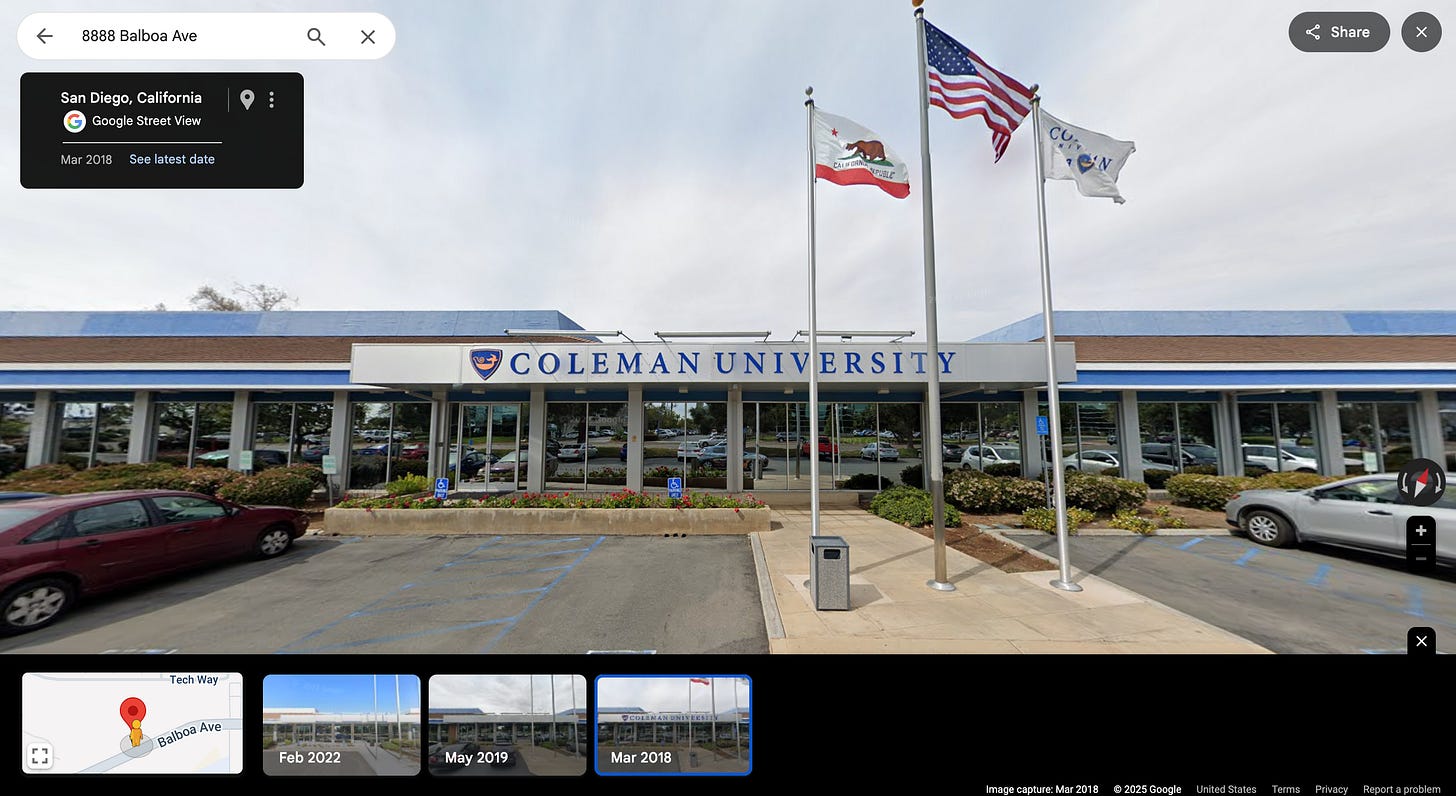
What Was Coleman University?
Coleman University was founded in 1963, first known as the Automation Institute of San Diego. It focused on technical and eventually computer-related curriculum. The college was actually ahead of its time in terms of STEM education.
The college was located at 8888 Balboa Avenue in San Diego, California. The campus location was not on a traditional sprawling campus green. Instead, Coleman was located in what I would describe as a kind of old suburban strip mall and industrial area. It certainly wasn’t in the fanciest parts of the city that is sometimes dubbed America's Finest City due to its beaches and perfect weather.
Despite the awkward location, Coleman was a real college offering a laudable undergraduate and graduate education in tech areas. The US federal government even cited Coleman in 2015 as having “excellence in outcomes,” which meant that it had top “completion rates, labor market outcomes, and loan performance.” The San Diego college was listed alongside higher education standouts of Harvey Mudd and the University of Maryland-College Park.
When Adaptive Reuse Fails
In 2018, Coleman closed its doors for good after over 50 years of operation. The leadership cited financial struggles and the loss of accreditation. At the time, it only had 200 enrolled students.
As with many of these spaces, another college moved into the space at first. Glendale Career College (GCC) then operated its San Diego campus from the location for a couple of years, but moved in 2021. The space sat idle for a year or so after GCC moved out.
In 2022, the space underwent a rapid change. At that point… it was gone. All of it. What was the entire Coleman University was leveled for new development. The evolution has been preserved on Google Street View, moving from Coleman to GCC and an empty lot. What is the space now?
Today, the former Coleman campus space has become a 123,492 square foot logistics facility, with high ceiling clearance. That’s right, it is an industrial warehouse site available for commercial lease via Colliers.
I visited the site to get a sense of what the area has become. It was a strange feeling being in such an unassuming area where no one would guess a college once sat. See my video clip below:
Struggling to Survive
Coleman began as a for-profit when it was founded and later converted to non-profit status in 1972. This switch in statuses can sometimes leave long-term issues that are hard to recover from. For-profits close at a much higher rate (which I will have an upcoming post on the topic).
There were also some complex relationships with the Coleman board, foundation, and founder of the university hanging over from the switch to for-profit. I will dive into some of these issues in my future book.
One issue was that Coleman seemingly had trouble shedding this for-profit label. The topic was even in the discussion about the school’s closing on the San Diego Subreddit. Commenters still thought it was a for-profit at that point even though it had changed over 40 years prior.
Why do some people choose to go to a for-profit school rather than cc or state/UC?
National University is definitely better for this, as they're non-profit.
Coleman wasn't for-profit.
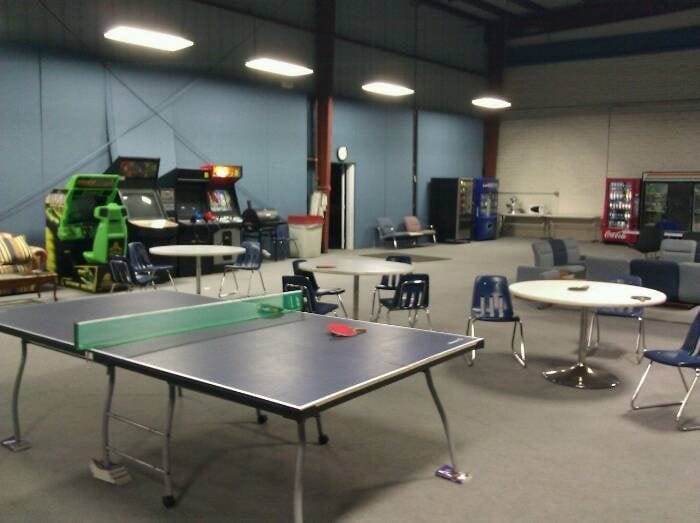
I will say there were positive comments from alumni of the college on their experience and education. Coleman really did seem to have a good reputation in the local San Diego County tech sector at one time. But the curriculum and student pool were more akin to a technical school, which meant it struggled to create an identity with student life and alumni that modern American universities have leaned upon for growth and survival over the past half century.
The area around campus is just more industrial in feeling than that of a college. Being at this location must have been difficult to create a college-like atmosphere. But this could have also played into the tech appeal and networking with the location.
I further discuss my visit to the former campus in a clip below (note: I messed up the audio on this, which is why I didn’t make the topic into a full video like I’ve done in the past):
What Can Be Reused
It does not appear that anything on the part of the campus where I visited survived. However, Coleman had a partnership with a local charter school called Coleman Tech Charter High School. The school building still physically stands. In 2016, it changed its name to The School for Entrepreneurship & Technology.
I didn’t get to visit the school firsthand, but it does highlight how K-12 schools are often easier for adaptive reuse than full university campuses. A school is usually a more flexible and simpler space compared to a university. Plus, there are more new school ventures, like charters, to take over shuttered locations.
In the end, universities are complex spaces. Every building on campus may need a completely different reuse. The university, the location, the contexts, and even the time period may call for a radically different solution. In some cases, the option may simply be razing the entire campus as with Coleman. The college, the history, and the connection to a place lost forever.



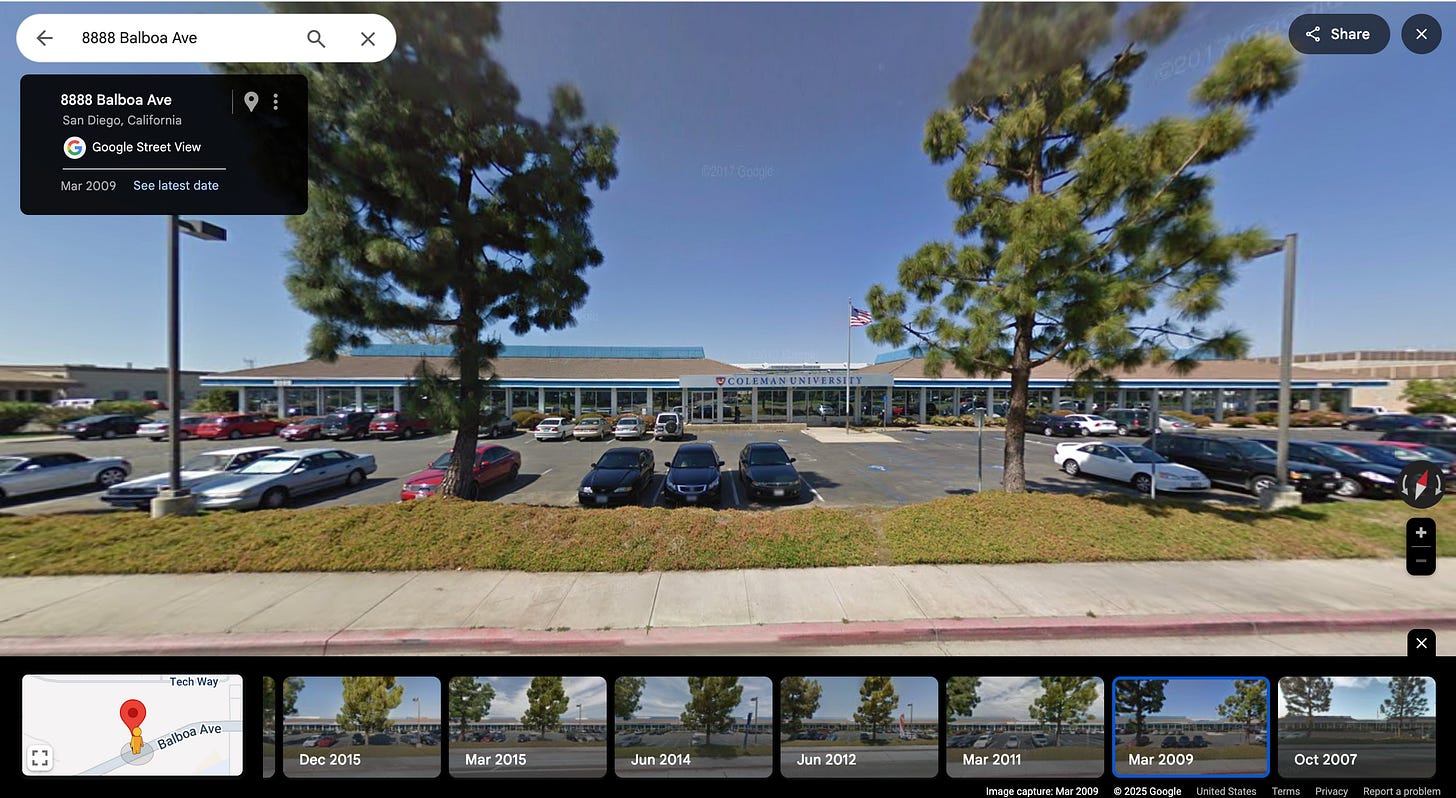
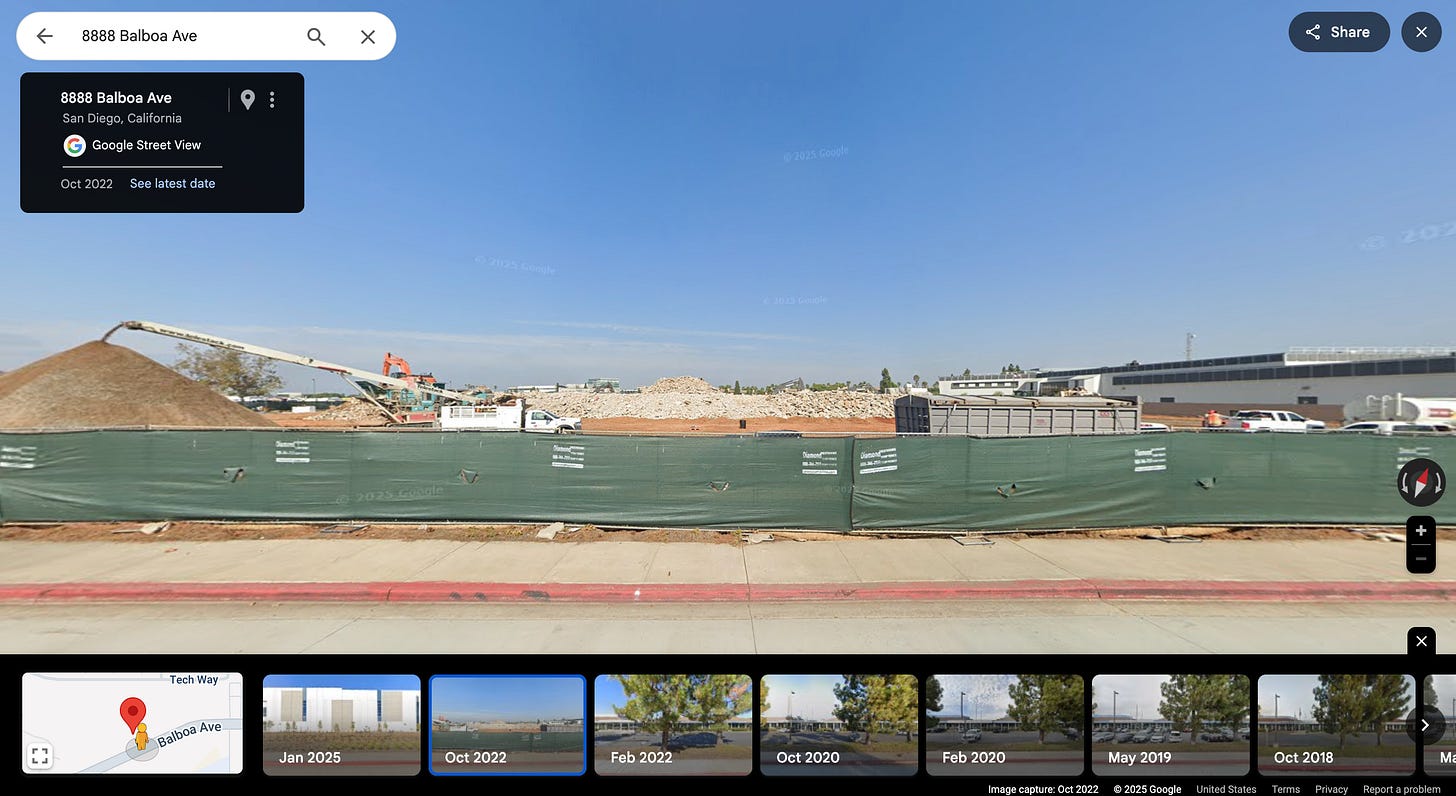
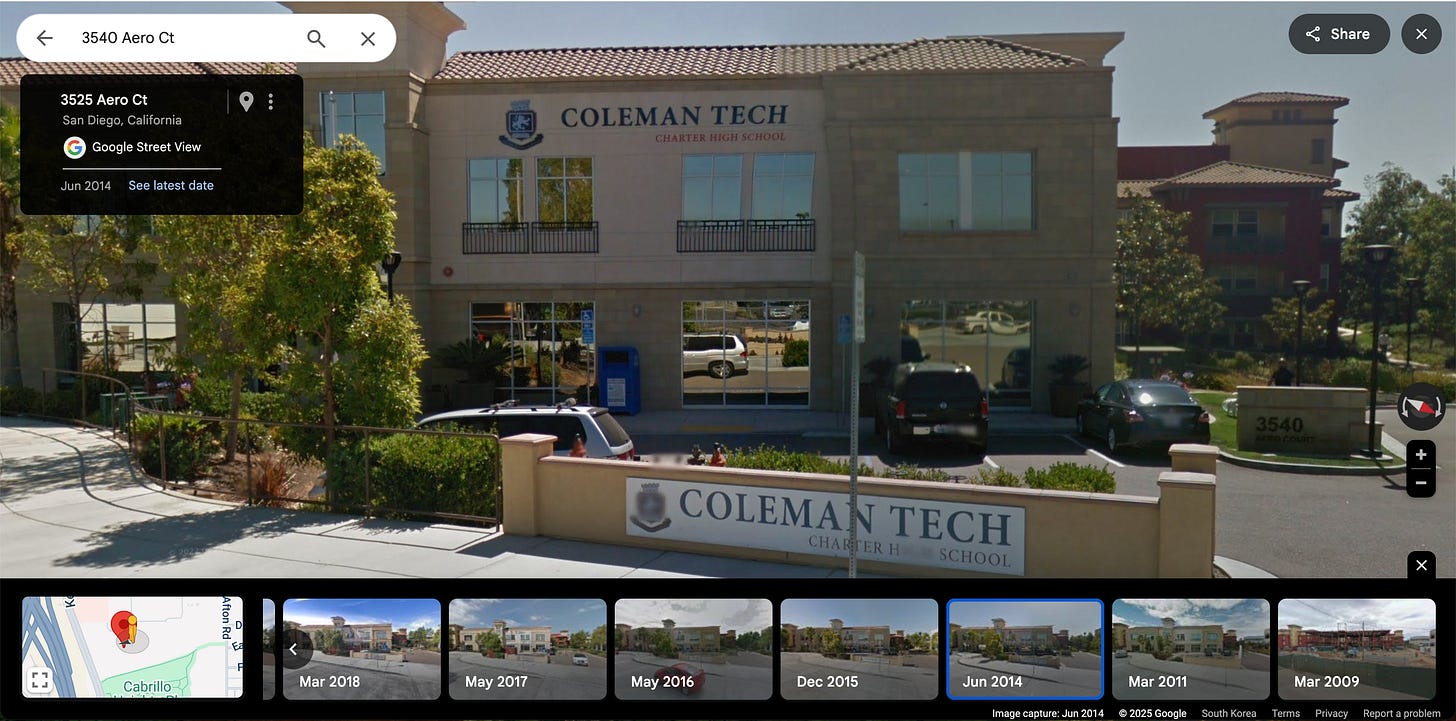
I attended Lambuth College in Jackson TN., which closed in 2010. University of Memphis bought it and installed a satellite campus there, but when I drive through there now the “magic” feels dead.
I was a teacher, chair and advisor at The Art Institute of Dallas, and many of my former students are rising in their early or midcareers in advertising, animation, video, interior design, audio, and in culinary careers. Closed several years ago.